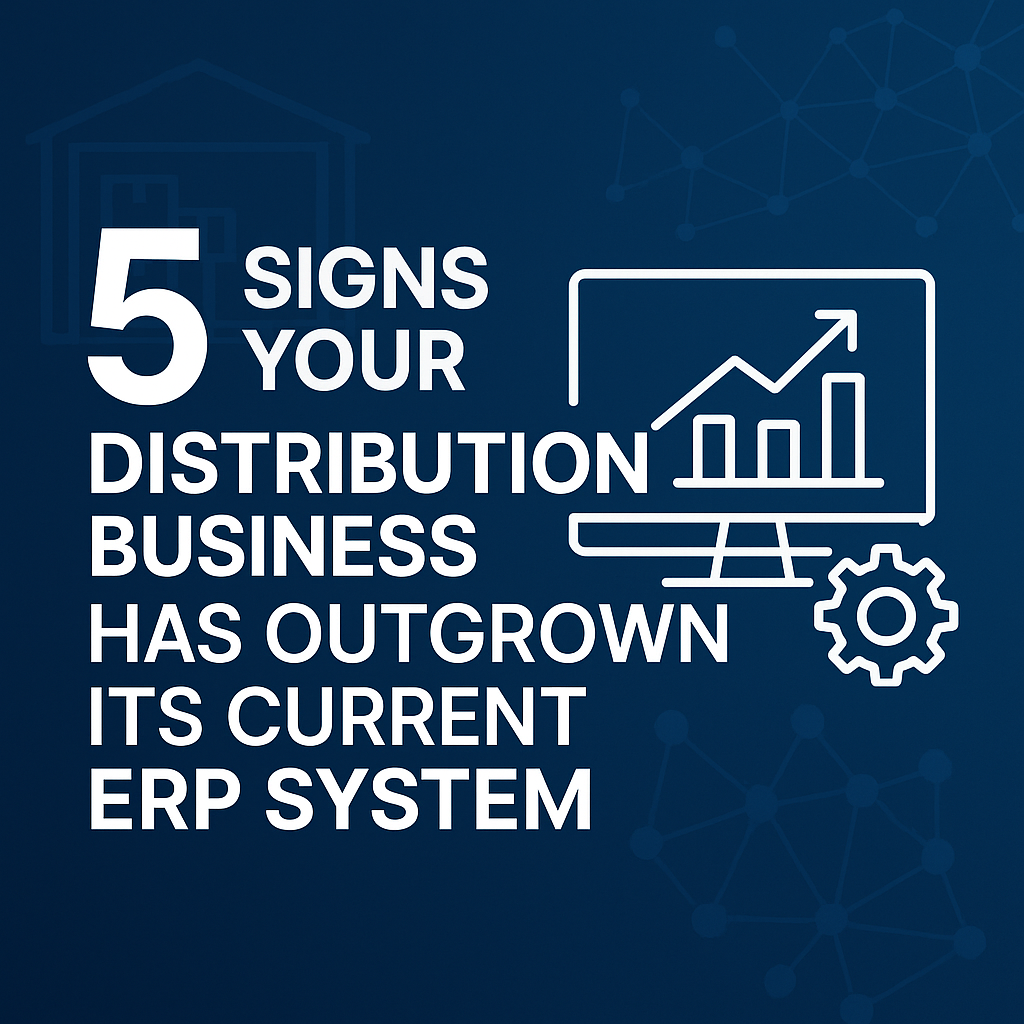5 Signs Your Distribution ERP System Is Holding You Back
As your distribution business grows, so do your operational demands. What once worked seamlessly may now be slowing you down. Your distribution ERP system should evolve with your business, but many companies overlook the warning signs until inefficiencies cost them time, money, and customers.
If you’re starting to question whether your ERP is still doing the job, it’s time to take a closer look. Here are five telltale signs your distribution business has outgrown its current distribution ERP system, and what to do about it.
Your ERP System Can’t Replace Spreadsheets
One of the clearest indicators of an underperforming distribution ERP system is the increasing use of spreadsheets and manual workarounds. If your employees are frequently turning to Excel to manage inventory, generate reports, or track orders, your ERP isn’t meeting operational needs.
Manual data entry not only wastes valuable time but also introduces errors that can ripple across departments. This kind of workaround culture signals that your current system lacks the flexibility, integration, or reporting features your growing business requires.
What to do: Upgrade to an ERP solution that automates key tasks, integrates seamlessly across departments, and provides real-time access to accurate data.
Why businesses are ditching spreadsheets – CIO.com
Your ERP Doesn’t Integrate Seamlessly
In today’s digital landscape, your distribution ERP system needs to be the central nervous system of your business—integrating with CRMs, e-commerce platforms, warehouse management systems (WMS), and financial tools.
If your ERP operates in isolation or requires constant exporting/importing of data, you’re wasting resources and risking inconsistencies. For distribution companies, where speed and accuracy are crucial, poor integration can lead to shipping delays, billing issues, and frustrated customers.
What to do: Look for an ERP solution with strong API capabilities or pre-built integrations designed specifically for the distribution industry.
How ERP Integration Boosts Efficiency – TechRadar Pro
Your Distribution ERP System Lacks Real-Time Reporting
As your business grows, so does your need for data-driven decision-making. If your current ERP can’t provide real-time dashboards, predictive analytics, or customized reporting, you’re flying blind.
Many legacy systems struggle to process large volumes of data or present it in a usable way. This leads to delays in reporting, outdated insights, or the need for expensive custom development work just to answer basic questions.
What to do: Invest in a modern distribution ERP system with advanced reporting and business intelligence tools that allow stakeholders to make informed decisions on the fly.
Your Distribution ERP Can’t Scale with Your Growth
Do simple tasks take longer than they used to? Are users frequently reporting system lags or outages? As more users, data, and processes are added, older ERP systems often can’t keep up with the increased load.
Performance bottlenecks can disrupt critical operations—like order fulfillment or inventory updates—and directly impact customer satisfaction. If your team is wasting time waiting for screens to load, that’s time lost on revenue-generating activities.
What to do: Consider moving to a cloud-based distribution ERP system that offers scalability, improved uptime, and fast performance as your needs evolve.
Your System Has Poor Vendor Support
ERP vendors should act as partners in your success. But if you’re dealing with slow support, limited updates, or a system that hasn’t evolved in years, you’re at risk.
Distribution businesses need to stay competitive by adapting quickly to market demands, regulatory changes, and customer expectations. An outdated ERP system—or one with minimal vendor support—can be a major liability.
What to do: Choose a vendor that provides consistent system enhancements, proactive support, and a roadmap aligned with your industry’s needs.
What’s Next? Partner with ERP Experts Who Understand Distribution
Recognizing these signs is the first step. The next is finding a partner who understands the unique demands of the distribution industry.
At 910 Advisors, we specialize in helping distribution businesses identify ERP gaps, implement scalable solutions, and optimize systems for long-term success. Whether you’re considering a full ERP upgrade or just need a performance audit, our team is here to guide you. Check out our other blog!
Schedule Your Free ERP Readiness Assessment
Ready to evaluate whether your ERP system is supporting, or stalling your growth?
👉 Schedule your free consultation with 910 Advisors and get expert insight into the right solution for your business.

